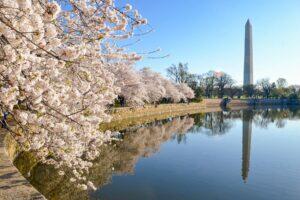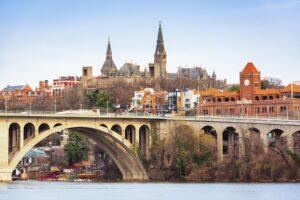Fodor's Expert Review Freer and Sackler galleries
The Smithsonian Institution has two museums of Asian art: the Freer Gallery of Art, which opened to the public in 1923, and the Arthur M. Sackler Gallery, which welcomed its first visitors in 1987. Both are physically connected by an underground passageway, and ideologically linked through the study, exhibition, and sheer love of Asian art. In addition, the Freer Gallery contains an important collection of 19th-century American art, punctuated by James McNeil Whistler's Peacock Room. In January 2016, the Freer Gallery will close for renovations. The 93-year-old-building, which was the first art museum on the National Mall, is scheduled to reopen in the summer of 2017. During this time, the Sackler Gallery, Library and Archives will remain open to visitors.
Explore a dramatic collection of 12th- to 19th-century Buddhist art from South Asia, including a majestic stone image of Shiva Dakshinamurti (Lord of the South) and a fierce gilded bronze of Palden Lhamo, the deity that protects... READ MORE
The Smithsonian Institution has two museums of Asian art: the Freer Gallery of Art, which opened to the public in 1923, and the Arthur M. Sackler Gallery, which welcomed its first visitors in 1987. Both are physically connected by an underground passageway, and ideologically linked through the study, exhibition, and sheer love of Asian art. In addition, the Freer Gallery contains an important collection of 19th-century American art, punctuated by James McNeil Whistler's Peacock Room. In January 2016, the Freer Gallery will close for renovations. The 93-year-old-building, which was the first art museum on the National Mall, is scheduled to reopen in the summer of 2017. During this time, the Sackler Gallery, Library and Archives will remain open to visitors.
Explore a dramatic collection of 12th- to 19th-century Buddhist art from South Asia, including a majestic stone image of Shiva Dakshinamurti (Lord of the South) and a fierce gilded bronze of Palden Lhamo, the deity that protects Lhasa, the capital city of Tibet.
Admire the luxurious collection of Iranian gold and silver metalwork, including the intricately decorated, 4th-century Shapur Plate.
Discover the voice of contemporary Asian artists through cutting-edge immersive installations in the Sackler's ground-level pavilion.
Before the Freer closes in January, be sure to visit the Peacock Room, a jewel box of a space designed by James McNeill Whistler, with gold murals on peacock-blue walls, and a peacock-feather-pattern gold leaf ceiling. At noon on the third Thursday of every month, the floor-to-ceiling shutters are opened, bathing the room in glittering natural light.
The galleries are the first in the Smithsonian to digitize and release their full collection, available for browsing at Open F/S (www.open.aisa.si.edu).
Free highlight tours are held daily, except on Wednesday and federal holidays.
The museums regularly host films, concerts, talks, and other events. Visit the website to see what's on. Enhance your visit with free iPad apps featuring the Peacock Room and select exhibitions.
In the ImaginAsia workshops, children ages 6 to 14 create art ranging from origami to Chinese mirrors.
READ LESS





